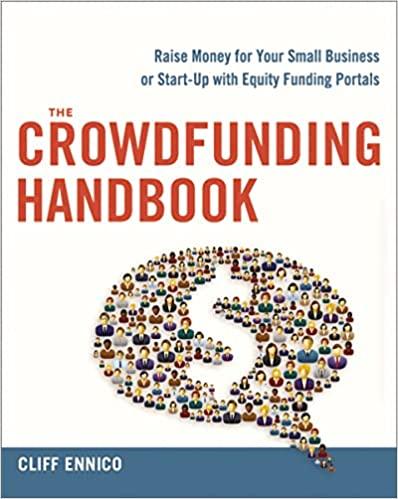Question
In this week's case, we'll be returning to the topic of Discounted Cash Flow Analysis and using our calculators to compute the Present Value of
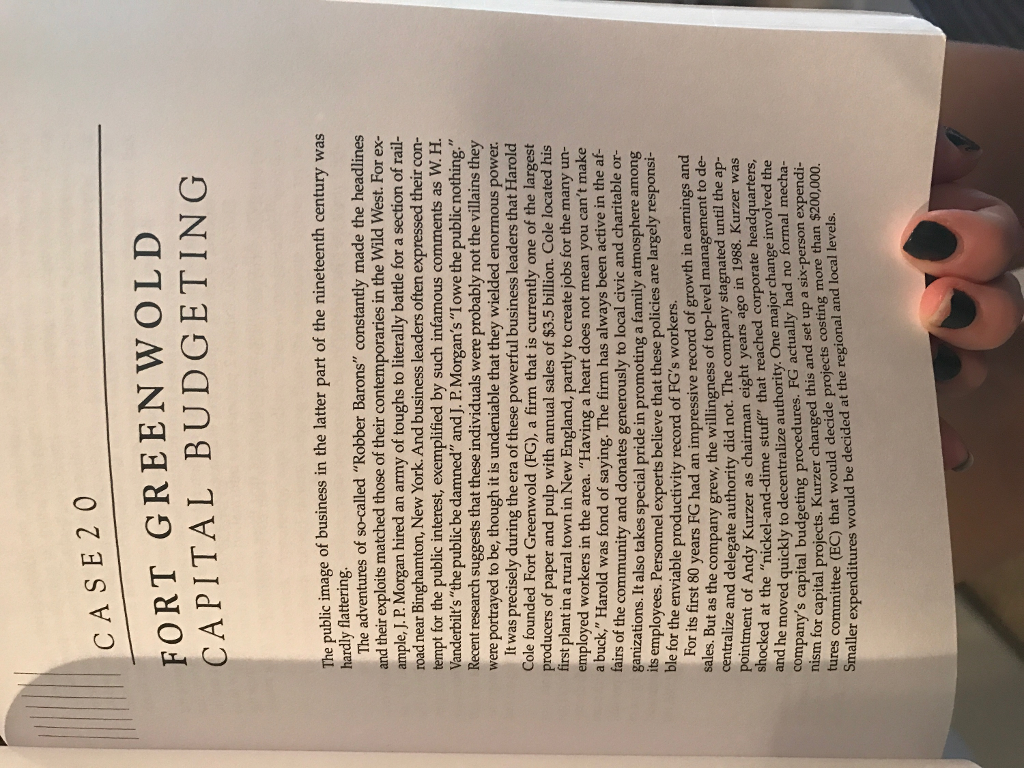
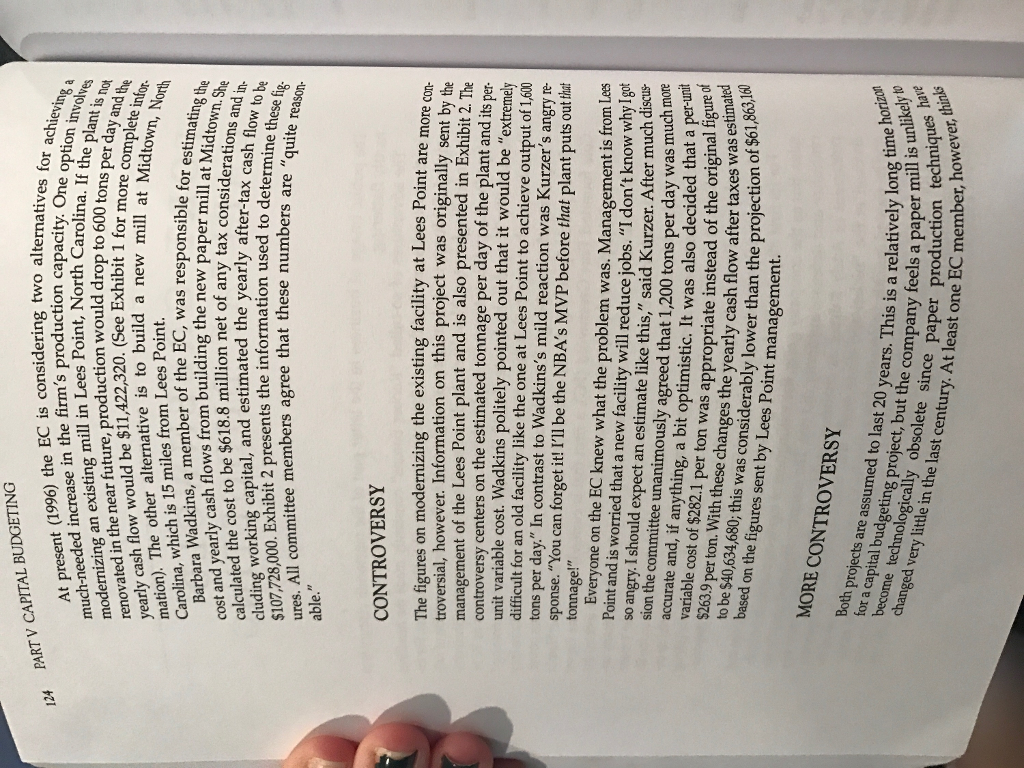
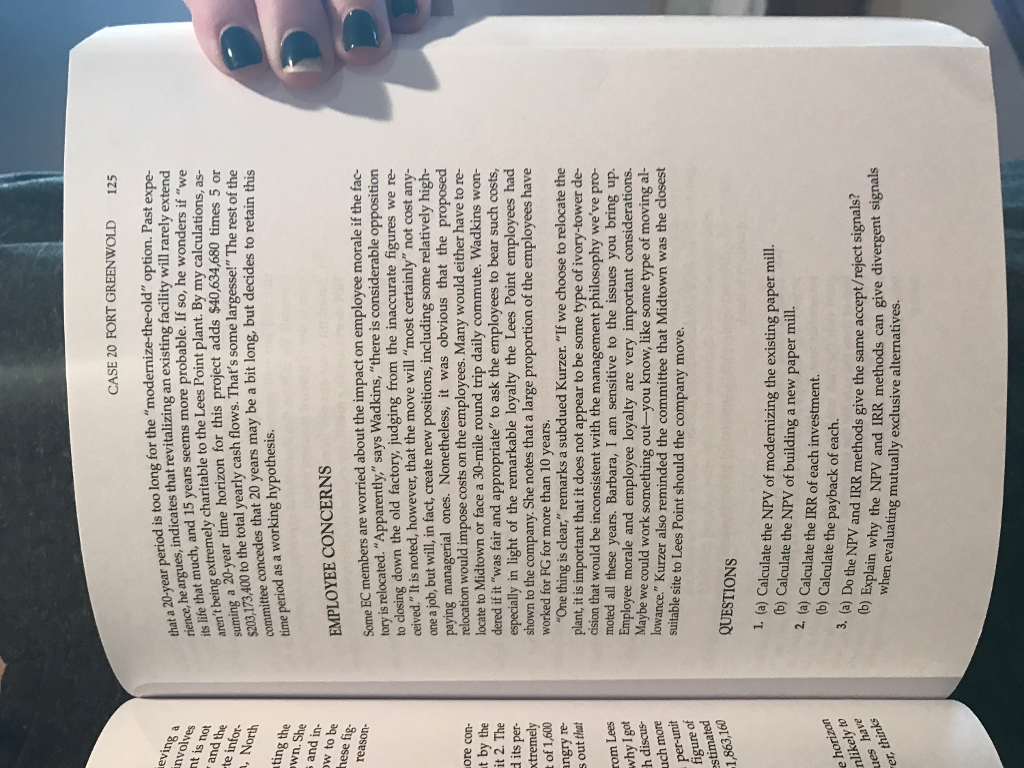
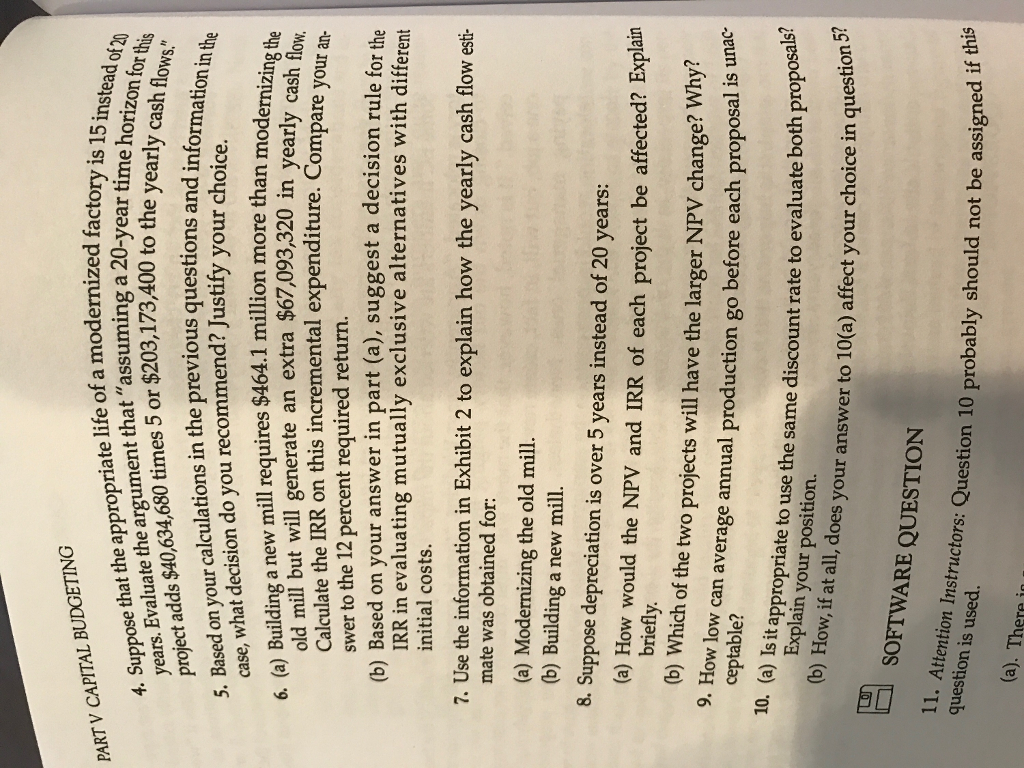
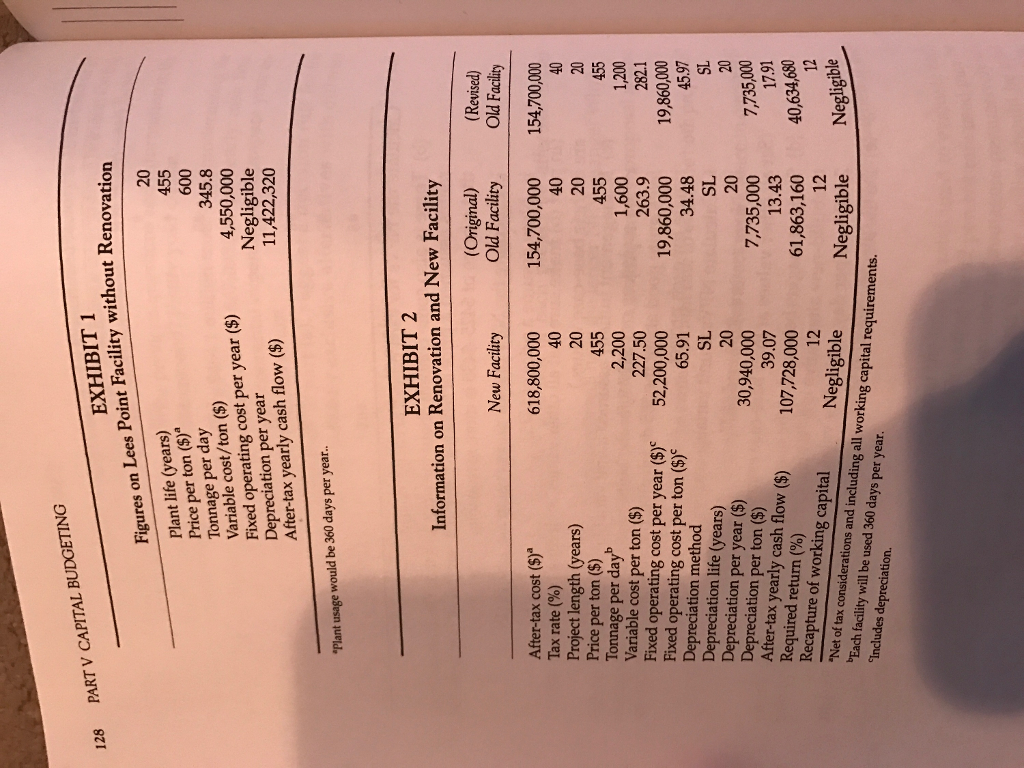
In this week's case, we'll be returning to the topic of Discounted Cash Flow Analysis and using our calculators to compute the Present Value of an expected stream of future cash flows. This time however, instead of valuing financial securities like bonds and stocks, we'll be assuming the role of a manager at a company charged with making a capital budgeting decision. The company is a paper mill and the decision is one of whether to renovate an existing mill or to build an entirely new mill. Which alternative is chosen depends solely upon which alternative is found to be more profitable, in an economic sense.
When we talk about profit in an economic sense, we are guided not simply by the net income of a project after expenses (more of an accountant's way of viewing the world), but the returns or wealth created from a project when taking into account the Time Value of Money and, integral to that, the risk we must assume to invest in the project. This allows us to compare the initial investment (outflows) in a project with the Present Value of the expected future cash receipts (inflows) of the project. It also allows us to compare two mutually exclusive projects to determine which is more profitable.
The two financial models we will use to value and compare the alternative capital projects in this week's case are Net Present Value (NPV) and the Internal Rate of Return (IRR). Again, these are concepts and methods you should be familiar with from your previous finance studies. I have included a Powerpoint presentation under 'Weekly Lessons" that discusses and compares these two models and provides examples of how to apply them.
TIPS for solving the case problems:
1) EXHIBITS 1 and 2 on page 128 provide the data needed to plug in and solve for NPV and IRR. The cash flows invested and cash flows expected to be received are stated as "After-tax".
2) When discounting the expected periodic cash flows (inflows) associated with EITHER renovating the existing mill or building a new mill, you must first deduct the current periodic after-tax cash flows. The reason for this is that the mill is already generating cash flows so what we are actually valuing for purposes of making an investment decision, are the incremental cash flows expected with either renovation or building anew. In other words, we don't want to "double-count" by valuing the existing cash flows.
3) In EXHIBIT 2, ignore the figures in the column labeled (Original Old Facility). You want to compare the NPV and IRR of the two alternative projects using the figures in the column labeled New Facility and (Revised Old Facility). This latter column refers to the renovation project.
Please answer Questions 1.(a), 1.(b), 2.(a), 3.(a), 3.(b), 5. Remember to show all of your work; you will need to do the same on the Final Examination.
CASE 20 FORT GREEN WOLD CAPITAL BUD GET ING The public image of business in the latter part of the nineteenth century was hardly flattering. The adventures of so-called "Robber Barons" constantly made the headlines and their exploits matched those of their contemporaries in the Wild West. For ex- ample, J.P Morgan hired an army of toughs to literally battle for a section of rail- road near Binghamton, New York. And business leaders often expressed their con- tempt for the public interest, exemplified by such infamous comments as W. H. Vanderbilt's "the public be damned" and J. PMorgan's "Iowe the public nothing. Recent research suggests that these individuals were probably not the villains they were portrayed to be, though it is undeniable that they wielded enormous power It was precisely during the era of these powerful business leaders that Harold Cole founded Fort Greenwold (FG), a firm that is currently one of the largest producers of paper and pulp with annual sales of $3.5 billion. Cole located his first plant in a rural town in New England, partly to create jobs for the many un employed workers in the area. "Having a heart does not mean you can't make a buck," Harold was fond of saying. The firm has always been active in the a fairs of the community and donates generously to civic and charitable o ganizations. It also takes special pride in promoting a family atmosphere among tsemployees. Personnel experts believe that these policies are largely responsi- ble for the enviable productivity record FG's workers. and first 80 years an impressive record of growth in earnings sales. But as the company grew, the willingness of top-level management to de- centralize and authority did not. company stagnated until the ap- delegate eight ago in 1988. was of Andy Kurzer as chairman shocked at stuff" reached corporate headquarters the authority One major change involved the moved quickly to decentralize actually had no formal mecha company's capital budgeting procedures FG expendi nism for capital projects. Kurzer this and set up a six-person $200,000 would decide costing more than smaller expenditures would decided at the regional and be CASE 20 FORT GREEN WOLD CAPITAL BUD GET ING The public image of business in the latter part of the nineteenth century was hardly flattering. The adventures of so-called "Robber Barons" constantly made the headlines and their exploits matched those of their contemporaries in the Wild West. For ex- ample, J.P Morgan hired an army of toughs to literally battle for a section of rail- road near Binghamton, New York. And business leaders often expressed their con- tempt for the public interest, exemplified by such infamous comments as W. H. Vanderbilt's "the public be damned" and J. PMorgan's "Iowe the public nothing. Recent research suggests that these individuals were probably not the villains they were portrayed to be, though it is undeniable that they wielded enormous power It was precisely during the era of these powerful business leaders that Harold Cole founded Fort Greenwold (FG), a firm that is currently one of the largest producers of paper and pulp with annual sales of $3.5 billion. Cole located his first plant in a rural town in New England, partly to create jobs for the many un employed workers in the area. "Having a heart does not mean you can't make a buck," Harold was fond of saying. The firm has always been active in the a fairs of the community and donates generously to civic and charitable o ganizations. It also takes special pride in promoting a family atmosphere among tsemployees. Personnel experts believe that these policies are largely responsi- ble for the enviable productivity record FG's workers. and first 80 years an impressive record of growth in earnings sales. But as the company grew, the willingness of top-level management to de- centralize and authority did not. company stagnated until the ap- delegate eight ago in 1988. was of Andy Kurzer as chairman shocked at stuff" reached corporate headquarters the authority One major change involved the moved quickly to decentralize actually had no formal mecha company's capital budgeting procedures FG expendi nism for capital projects. Kurzer this and set up a six-person $200,000 would decide costing more than smaller expenditures would decided at the regional and be
Step by Step Solution
There are 3 Steps involved in it
Step: 1

Get Instant Access to Expert-Tailored Solutions
See step-by-step solutions with expert insights and AI powered tools for academic success
Step: 2

Step: 3

Ace Your Homework with AI
Get the answers you need in no time with our AI-driven, step-by-step assistance
Get Started


